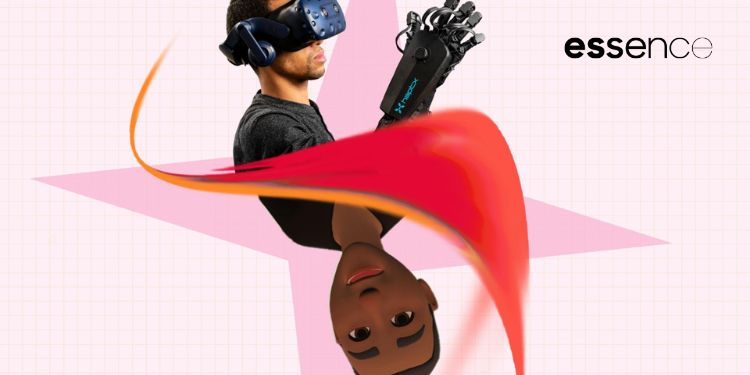GroupM defines metaverse as a virtual environment, either a broad or narrow focused community, that supports real-time interactions comparable to those in the real world — a workplace, education, gaming, or general community forum through the integration of emerging technologies like AR, cryptocurrency, VR, and more, depending on the community.
Essence’s global report on the metaverse takes a deeper dive into this new frontier, including a look at consumer sentiment, marketer activations, sustainability, and next steps.
According to a report by Bloomberg, the global market for the metaverse was estimated to be $478.7B in 2020 and projected to reach $783.3B by 2024 at a CAGR of 13.1%.
The report says that, For the moment, the metaverse remains tethered to its gaming roots and is simply the continued fragmentation of the media ecosystem. It’s a viable media channel for brands looking to capture the hearts and minds of the various youth, early adopter, and tech affinity tribes actively engaging in the metaverse of today.
Most of the action is in somewhat conventional games like “Fortnite” and “Roblox” and “play to earn games” like “Decentraland,” “Sandbox,” and “Axie Infinity,” in which players can earn digital currency or collect NFTs that have real-world value.
Brands have been piling into this gaming version of the metaverse. A very incomplete list of companies with activations includes Nike, Coca-Cola, Wendy’s, Adidas, Chipotle, McDonald’s, Walmart, State Farm, Hyundai, and Gucci. Numerous agencies have also set up offices there.
The metaverse isn’t being built for GenX or even Millennials. It’s being built for GenZ, Generation Alpha, and whatever comes after. If you’re at all concerned about future growth — and who isn’t — experimenting in the metaverse is a good place to start.
Web3, the blockchain, and cryptocurrency
According to some definitions of the “metaverse,” the blockchain will be its foundation. It will exist in a Web3 world beyond our current url-based world wide web or soon-to-seem primitive social media apps. Just how this world will be accessed is unclear.
Forrester believes the metaverse “won’t require Web3 technologies like blockchain and won’t depend on crypto economic systems to operate.” Even within the ranks of Essence there is disagreement about how fundamental these will be to the metaverse. Some very passionately believe they’re key. Others not so much.
“We also aren’t near broad consumer adoption of cryptocurrencies and NFTs. Both strike the average consumer as confusing, speculative, and possibly dangerous,” the report says.
According to the report, crypto is experiencing a very bad PR cycle as part of the market collapses.
“ For the average consumer who isn’t a leading-edge technophile, there are also matters of interoperability, accessibility, ease of use, and other barriers to entry. From a brand’s point of view, this is a fairly easy “wait-and-see” decision,” it states.
NFTs have found favor with early adopters in the tech, celebrity, and branding worlds.
As of this writing, The Wall Street Journal was reporting that the NFT market was flatlining, with daily average sales “experiencing a 92% decline from a peak of about 225,000 in September, according to the data website NonFungible.”
This prompted the paper to posit the question, “Is this the beginning of the end of NFTs?” It’s entirely too soon to tell. Remember that the QR code was consigned to the dustbin of history until the COVID-19 pandemic dramatically changed business needs and consumer behavior.
For certain brands, there’s no reason not to experiment with NFTs. But they should do so with caution. When McDonald’s created an NFT drop tied to the McRib sandwich last year, someone included a racially insensitive message as part of a transaction. As CoinDesk wrote about the incident, “It highlights the risks involved with public companies working with blockchain, where almost anyone can post a transaction for all to see. And posts on the blockchain are forever.”
Brand Safety
Aside from audience size familiarity of gaming, there’s another reason brands are piling into things like “Animal Crossing,” NBA 2K, and “Roblox”: brand safety.
“Roblox,” as a walled garden owned by one the company, is relatively safe. Built primarily as a kid’s game and with over half its audience under the age of 13, the universe operates accordingly. It has a fairly thorough set of community standards and machine-screens 100% of chats. But it remains a live environment and the company can’t monitor 100% of content.
Human content moderation only comes into play if a complaint is filed and a truly open metaverse will be largely user-generated and unregulated. In some cases, users will not want their spaces policed in the first place. If actual
interoperability is achieved, it becomes that much trickier if not downright impossible. Gaming platforms are already home to vulgarity and harassment. Throw politics, dating, and poorly gated adult-only content into the mix and, well. It’s a lot like the real world.
As the metaverse expands, there will be some corners more fit for brands than others. As in the real world, companies will have to consider their products, their target audience, potential partners, and the context before venturing in.
After all, some brands might find even current metaverse-type games are a little too risky.
“Fortnite,” for example, might be seen as too violent. The abundance of children in “Roblox” might make it a no-go for others.
Companies will need to keep in mind what consumers are worried about as well. According to Wunderman Thompson data, among those who know what the metaverse is, their top concerns include privacy, data protection, children’s safety, and bullying.
“If we don’t start experimenting now you’re not going to build up a body of learning so that when it does become more substantive you’ve at least found a role for the brand in this sort of space. You’re coming into the space behind everyone else. .. Better to run some experiments and embrace failure.” – Jon Gittings, exec VP of strategy, Essence.
Successful brands will be an organic part of metaverse communities by providing relevant solutions to actual problems and meeting in-world needs or real-world needs.
This could go as deep as helping bring the metaverse itself to life by developing the technical tools that will power the metaverse or perfect the end user experience. For most, focusing on how the brand and its consumers exist within the metaverse probably makes more sense.
The metaverse may seem small. It may be overhyped. It may seem alien or dangerous. But it — or some version of it — is likely to be a fundamental part of the future landscape. According to YPulse, 57% of GenZ have created an avatar in a video game, 48% have created an avatar on social media, and 27% have followed a virtual person on social media. On top of that 32% report having purchased virtual or digital goods.
A Wunderman Thompson survey found that, among those who know what the metaverse is, 82% said it will be a place to socialize, 70% said it will be a place to shop, and 68% said it will be the future of e-commerce/online shopping. Sixty percent said brands should be manufacturing and selling digital products alongside physical products.
















